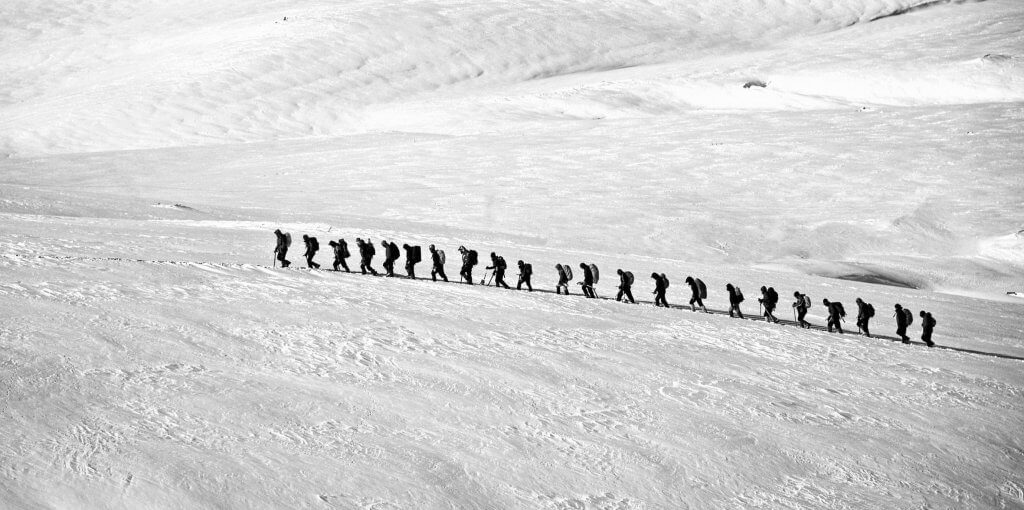How Two Figures Shaped Our Core Principles on Nonprofit and Philanthropic Leadership
In February, the era-shaping philanthropists Bill and Melinda Gates issued an annual letter — titled “The 10 Toughest Questions We Get” — that was noteworthy for the willingness of its authors to be open and forthright about the basis of their core principles.
Whatever your role in the nonprofit world — executive, staffer, board member, or philanthropist —identifying your core principles is an essential foundational element of choosing your own focus and role. We will describe our core principles in our next column. But in the process of articulating them, we have both discovered they were shaped by early encounters with two of the highest impact social entrepreneurs in recent history.
When Bill (Meehan) was a senior at Columbia University in 1974, he had a chance encounter with a classmate which led to a job as a researcher for Bill Drayton. Drayton was then an associate at McKinsey & Company, leading a project for the Edna McConnell Clark Foundation on developing roles for senior citizens. About a decade later, he would found Ashoka and, in doing so, launch the movement that we now call social entrepreneurship. Bill’s relationship with Drayton shaped his life and career—McKinsey, Ashoka, and social entrepreneurship, later Stanford Graduate School of Business’s Public Management program. He learned that the McKinsey approach to fact-based, analytical problem-solving was applicable not only to business problems but, with some adaptation, to the problems faced by the social sector, despite as Jim Collins, author of Good to Great: Why Some Companies Make the Leap … And Others Don’t and Good to Great and the Social Sectors writes in the preface to our book, Engine of Impact: Essentials of Strategic Leadership in the Nonprofit Sector, “…a social sector organization is more complex, the problems more intractable, and the economic engine more uncertain than what companies face in rational economic markets.” It may be no coincidence that Drayton, Collins, Meehan, and Jonker all spent their formative professional years at McKinsey and Company.
Bill Drayton, founder of Ashoka, who pioneered the field of social entrepreneurship
Photo: Ashoka
Bill also learned from Drayton what it takes to achieve high social impact at scale. Relentless personal focus and persistence, usually over decades. Strong, ethical fiber. A logical theory of change. And rigor in thinking and execution that matches the complexity and ambiguity of the social problem your organization is tackling.
During her especially formative years, Kim advised and led the evaluation and selection process for the Henry R. Kravis Prize in Nonprofit Leadership. In 2005, while she was helping to sort through applications for what would be the inaugural prize, she had an experience that has strongly informed her thinking about the nonprofit sector and her approach to our common purpose of high impact at scale.
She was, as she recalls, sitting at a big conference table and making her way through thick stacks of nomination material. Her eyes started to glaze over. Many of the applications were full of jargon; they included lofty—but ultimately empty—mission statements. They were full of verbiage but said little about what the applicant organizations actually did. Many of these organizations, as it turned out, hadn’t reached very many people, and they had little or no evidence to show their work had made any real impact.
Then came the moment that Kim vividly remembers. She picked up a prize nomination for a candidate that jumped off the page. It was for Roy Prosterman, leader of an organization now called Landesa, which promotes land rights and land reform for the rural poor across the globe. Over the course of four decades, Landesa had improved the lives of more than 400 million people in numerous countries.
Roy Prosterman (center) the founder of Landesa
Photo: Landesa
Under Prosterman’s leadership, Kim learned, Landesa had developed a clear and focused mission. It had formulated an elegant and rigorous strategy. It had focused diligently on scaling its impact, and not merely on increasing the size of its organization. In fact, for most of its first 20 years, it operated with an annual budget of less than $2 million. Its office during those years was a one-bedroom apartment that was so small that Prosterman and his team had to keep half of the files in the bathtub – and the other half on the stove!
So, there was Kim, staring at a description of real, live impact at scale. Prosterman became the first Kravis Prize winner, and in subsequent years other winners—Pratham, BRAC, and Helen Keller International to name just a few—reinforced the views about mission, strategy, and scaling (among other essential topics) that Kim began to crystallize while sitting at that conference table.
In 2013, we joined forces to lead a day of peer learning with Kravis Prize winners. We pulled together our preliminary observations in a Stanford Social Innovation Review series, “Fundamentals Not Fads.”
Our perspectives on what is excellent nonprofit and philanthropic leadership have continued to be reinforced through our work in recent years with King Philanthropies as funders to nonprofit organizations with proven interventions into extreme poverty alleviation; our extensive advising of a wide range of other nonprofits in the environment, performing arts, health care; and, our teaching of future social entrepreneurs, nonprofit executives, board leaders, and philanthropists at the Stanford University Graduate School of Business. These collective experiences are what led us to synthesize our lessons learned in Engine of Impact.
We have seen many of the best nonprofit organizations—those that achieve truly high impact at scale—and understand what it takes to become one. But we have also seen the rest—the vast majority of nonprofits that, however well intentioned, are too small or too under-resourced, too unfocused or too lacking in rigor, to have real impact, much less impact at scale. Or the young, compelling social entrepreneur who “had an idea last night” to alleviate extreme poverty or solve the K-12 U.S. public education crisis—without comprehending the complexity, life commitment, rigor, and persistence that even laying a strong foundation for such an undertaking entails.
For us, it is crystal clear that Drayton and Prosterman were essential in shaping our core principles for nonprofit and philanthropic leadership. We encourage you also to take stock of the sources of your thinking, motivations, and ideals for your nonprofit and philanthropic leadership.
And then to articulate your core principles.
It’s only fair for us to go first – so, stay tuned.
Originally published in Forbes

